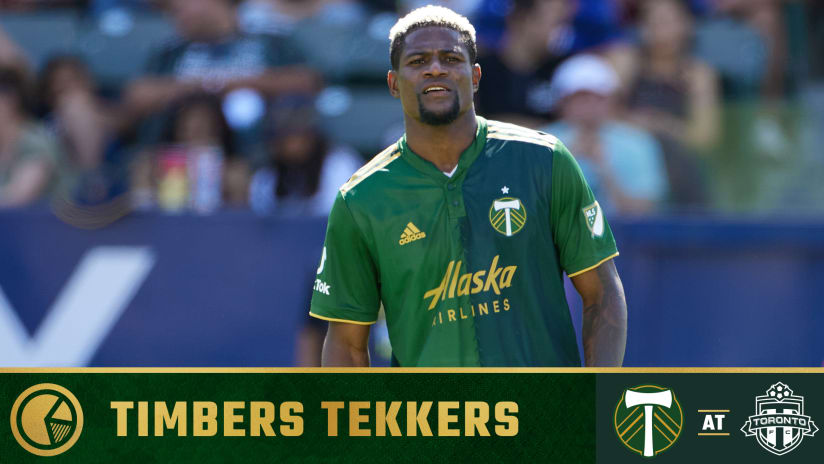PORTLAND, Ore. – The Portland Timbers tried a similar tactic last year, when the team used Targeted Allocation Money to bolster their defense with the acquisition of Claude Dielna. There were uncertainties in the early months, but by the end of the season, the plan’s general goal came through. He was a central defender who’s going to come in and defend and compete with the other players on the depth chart.
Consider that lens when looking at Dario Zuparic, a slightly younger player Dielna but one who addresses similar needs and goals. Is the Croatian going to start immediately? It’s too early to say, because the whole point of bringing him in is to compete within, not immediately slot in at the top of the center back depth chart.
This is one of the acquisitions Timbers’ president of soccer Gavin Wilkinson has come to allude to when saying, each offseason, the team will go out and acquire multiple players to provide new competition at multiple starting positions. The numbers change each year, but the philosophies are the same. You have to keep moving forward, and at each position, you need to have options.
Zuparic is now one of those options.
“Dario was targeted as a player of interest over a year ago and we are delighted to get a proven defender at a very good age to join the Timbers,” said Wilkinson. “[He] brings a wealth of experience and we believe his playing style, experience and leadership qualities will be very beneficial to the team and we expect him to make a significant impact once he is fully transitioned.”
The circumstances of last offseason led WIlkinson and his staff to pursue a different profile, one where Major League Soccer experience was a line item while a multi-year commitment wasn’t. Consider how Zuparic’s profile differs. With no experience outside Croatia or Italy, the 27-year-old doesn’t come with Dielna’s familiarity with his new circuit, nor may Portland need that as much, now. After another year, all of Julio Cascante’s, Larrys Mabiala’s and Bill Tuiloma’s experiences within MLS have evolved. The team’s needs in a complementary piece have evolved with them.
So to has Portland’s tolerance for a longer commitment. In the year after Liam Ridgewell’s departure – in the year where career highs in playing time for Cascante and Tuiloma have provided valuable information – the Timbers can move forward with more certainty: more certainty of what they have now; and what, in their players’ evolutions, they’re likely to have in the future. Mabalia as an anchor, but in the continued growths of Cascante and Tuiloma, there are educated guesses you can make as to how Portland’s needs will develop. From those guesses, a profile is formed of what you’d need from that longer commitment.
So how does Zuparic fit that profile? Without somebody like Wilkinson, Savarese or technical director Ned Grabavoy being unexpectedly explicit about it, we can start with the player’s experience. Eight years’ of time accumulated between two European leagues. One stint outside his home country. Three different clubs, for whom he held down consistent starting roles. That, within the context of the European game, Zuparic didn’t play for more than three clubs hints at a ceiling and a floor. This may not be a defender who commands a Designated Player’s consideration, but it is somebody who has consistently made himself essential, wherever he’s gone.
“Dario’s vast experience playing in Europe will be an important asset to strengthen our backline and his winning mentality perfectly aligns with the team’s culture," said Savarese.
There’s also an age component. Zuparic is 27. This isn’t the type of signing we’ve seen in recent years funneled through Timbers 2, where the life around the United Soccer Leagues gave players like Marvin Loría and Renzo Zambrano an evaluation period, as well as a period of adaptation. Zuparic’s ago hints at a what you see is what you get aspect to his arrival. This is a finished product. He’s going to be expected to contribute. His ceiling may be his floor.
Consider, too, how the profile of Timbers fullbacks has evolved in recent seasons, and what that means for your center back wants. To look at any good team and imply “center backs only do this” or “fullbacks only do that” would be too reductive, as most teams either have talents or schemes that allow them to do the proverbial “both.” But as Jorge Villafaña has returned from Mexico, Jorge Moreira’s established himself at right back, and Marco Farfan’s evolved into a United States U-level international, Portland’s developed fullback depth more commensurate with the modern game – depth that is capable of spending much of their time at the midfield line and beyond. The centerback at his side can sometimes be left on his own.
It’d be foolish to speculate how Zuparic will adapt to those demands – we’ve all been around MLS long enough to know there’s hit and miss ratio – but the context around his signing gives us clues: how is he expected to hit, and why.
Regardless, with his signing, the Timbers’ center-back depth chart is back to full strength. One of the players Wilkinson said would come in and compete for spots? His name’s on the books, now.












